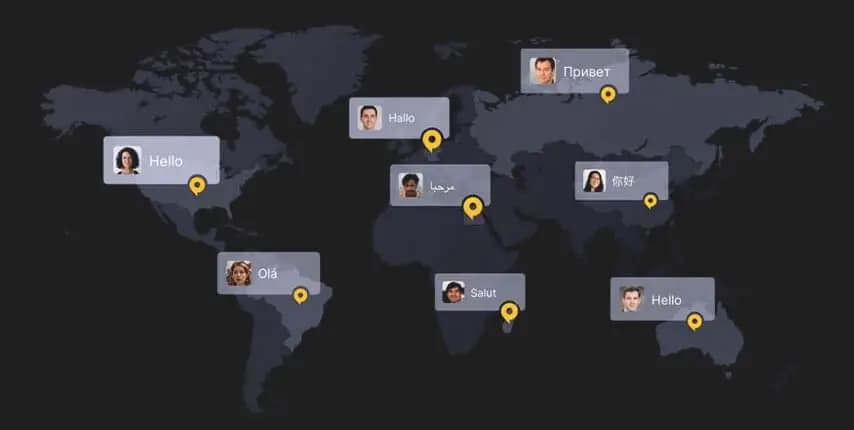Guide to Subtitling
In the media field, there are three timed text assets. These are: a) subtitles, which we will discuss further in detail, b) SDH (subtitling for deaf and hard-of-hearing) also known as CC (closed caption), and finally, forced narratives, which are text overlays that are important in the story and not covered in the audio such as location and details of a person talking to the camera.
Subtitling is one of the multimedia localization services. It is an audio-visual translation mode; audio for the dialogue and visual for other elements in the actual video or recording that tells the story or narrative. And though it may seem easy, there are so many things to consider while subtitling, whether it’s a translated text or just the original script written on the screen.
In this article, we will take you through the details of creating subtitles as follows:
How do Videos Work?
What is Timecoding?
The Five Strategies for Preparing Subtitle.
Preparing Your Subtitle.
Subtitling Programs.
How do Videos work?
A video consists of a number of frames (digital pictures) that flash very quickly, one after another. If you tried to click the fast-forward button on a video player, you could see the image landing on a picture (a single frame). When the video plays at normal speed (usually 24 or 29 frames-per-second, or fps), your eyes won’t be able to catch each individual frame, but rather they will see the video playing.
In one video, there can’t be two frames with the same time-code, and a single time-code can’t refer to two frames in a video, as frames are the smallest single units of a video.
What is Timecoding?
Timecode, or SMPTE* timecode, is an electronic signal used to identify a specific location or frame on time-based media such as audio, video, or digital systems.
They are written in the format: (hours:minutes:seconds;frames), referring to an exact frame in a video. For example, the time-code (01:25:06;110) refers to 01 hour, 25 minutes, 06 seconds, 110 msec/frames.
The separator (–>) comes between the beginning timecode and the end timecode, then another separator (a line break), and finally, the written dialogue to be displayed.
01:26:06;110 –> 01:26:12;135
You’re gonna stay here till you forgive yourself.
(Eat, Pray, Love)
*SMPTE refers to the Society of Motion Picture and Television Engineers.
The Five Strategies for Preparing Subtitle
As mentioned previously in our SDH blog, there are five key strategies for preparing efficient professional subtitling:
Vehicular matching: when the transcribed version is shown on the screen without any translation and identification; e.g. Guten Tag; Bonjour.
Translation with explicit attribution: translating the dialogue and indicating the foreign language spoken, e.g. [IN GERMAN] Good morning.
Translation and color-coding: In the subtitles, the translated message is performed, and the text is color-coded, e.g. Good morning.
Linguistic homogenization: avoiding the marking of the foreign language in the dialogue at all, e.g. Good morning.
What are subtitle file formats?
There are many subtitle file formats, some are:
.SRT
.SSA (SubStation Alpha)
.STL (Standard Triangle Language)
.SBV (YouTube format)
.SCC (Squamous cell carcinoma)
.SUB
.SAMI (Synchronized Accessible Media Interchange)
.TTML (Timed Text Markup Language)
.DFXP (Distribution Format Exchange Profile)
.VTT (Web Video Text Track)
.TXT (untimed text transcript)
.CIP
.PAC
.XML
Preparing Your Subtitle
Font and Size
Font: use “Sans Serif” fonts like “Arial” or “Helvetica”.
Size: 47 for high-resolution content, and 32 for standard definition videos.
Color:
Subtitles are traditionally white, and it’s preferable to use an outline so the subtitle is visible if the background is white.
Sometimes, yellow is used for subtitles to stand out, but some people see it as distracting while watching the video or the movie.
Line and Transcription
Maximum line length: 47 characters per line.
Maximum of two lines of text per scene.
Subtitles must stay within a text safe area.
Equal line lengths should be considered to reflect visual consistency.
Subtitle lines should match the dialogue as much as possible.
Line splits should consider grammar and linguistic basis.
Avoid overlapping of subtitles across shot changes (within 2 frames).
UTF-8 encoding should be used to ensure the correct display of foreign characters.
Timing:
Subtitles and dialogue should start at the same time and never before one another.
When reading speed is not an issue, subtitles should disappear immediately as speech finishes.
Spoken dialogue should follow the rhythm of speech for readability reasons.
Simplify speech if possible.
Subtitle Display Time
Minimum: 1 second (2 if possible).
Maximum: 7 seconds.
Reading Speed:
Subtitling shouldn’t annoy or distract the reader while they are watching the subject. Furthermore, the person should not be reading subtitles and watching content, but living a whole experience while watching.
Average readers, aged between 14 and 65 years who belong to a middle-high social class from an educational and social viewpoint, read between 150 to 180 words and up to 250 words per minute. Assuming that a subtitle of two lines has 14:16 words, up to 2 or 3 words approximately can be read in a second. Similarly, a subtitle with those characteristics should stay on the screen for about 5:30 seconds. Another quarter to half a second should be added for this time, as the brain takes time to be ready to intake, understand, and cope with the context. This frames the 6 seconds rule of subtitling.
For a very short dialogue, the subtitle is displayed for 1.5 seconds, e.g., Okay.
Special Characters and Punctuation:
When displaying a foreign speech, place language within square brackets, e.g. [German].
Use a colon after the speaker’s name, e.g. ELIZABITH: Tell me what I should do and I’ll do it.
Quotation marks should be used when dialogue refers to citation or song lyrics.
Film and TV productions usually do not use full stops or periods (.), however, some translators believe that using periods at the end of sentences transmits to the eye that it can get back to the image once again.
Question and exclamation marks (?, !) are used to indicate a question or emphasis respectively, placed right after the last character of a subtitle’s line.
Use a single space after commas, colons, semi-colons, mid-subtitle full stops, on both sides of dashes, and before and after brackets.
When a speaker interrupts another speaker, the interruption should be displayed in double hyphens (–) or a single long dash (—).
Use an ellipsis (…) for a pause within a caption. However, do not use an ellipsis to indicate that the sentence continues into the next scene.
Use quotation marks for the on-screen text from a poem, book, journal, or letter. Also, use quotation marks and italics for off-screen readings or voice-overs.
Foreign Speech in Subtitles:
Where translations will be applied to subtitle files, forced narratives or translations must be included.
Where translations are not being applied to subtitles a simple indication of foreign speech will suffice, E.g. [German]
For commonly known foreign words, transcribe with correct spelling and punctuation, in italics. E.g. Bonjour!
When translating audio into a different language, translate the meaning in a context not just words, making sure to deliver the point to the audience.
Sound:
If speech is blurry, place a label with the cause, e.g. (music covers speech).
When people are talking, but there is no audio, write [no audio] or [silence].
Sound effects should be explained in lowercase italics in brackets, e.g., (car honking) (baby crying).
For a multiple actors’ scene, use their names in the subtitles, e.g.:
KETUT: You need a healer.
ELIZABITH: I have you. You’re a medicine man.
In songs, use italics for lyrics. To indicate singing in a video use italics for lyrics and inserted a music icon (♪) before and after the line, e.g., ♪ Welcome to the hotel of California ♪ (or use hashtags # instead).
Capitalization:
Start sentences in capital letters.
Speaker’s name should be in capitals, e.g. GIOVANNI.
Capitalize a word or a whole sentence to indicate screaming or shouting.
Do not capitalize the initial of the first word in a line if it continues the previous one. Instead, place an ellipsis (…) then continue the sentence with an uncapitalized initial. e.g. …and please let me know after you finish it.
On-screen elements are other than speech, e.g. message, letter, sign, narratives.
Explaining expressive gestures meanings in words.
Subtitling Programs
Below, is a list of some commercial subtitling programs with hyperlinks to be downloaded or purchased:
Subtitle Workshop
Subtitul@m
Substation Alpha
WinCAPS
Fab
Spot Software
Swift
The subtitling industry is always evolving and growing, so you need to constantly read and be updated and educated about it. We will update this subtitling guide, so be sure to check back with us for improvements.






